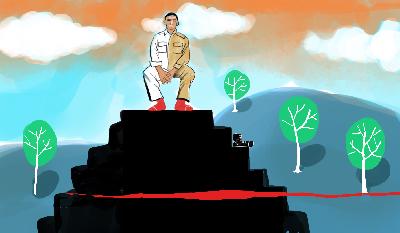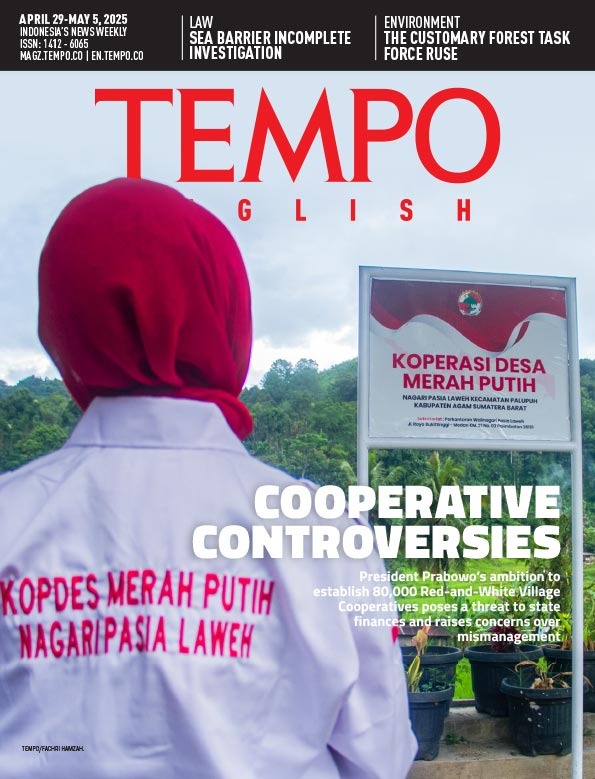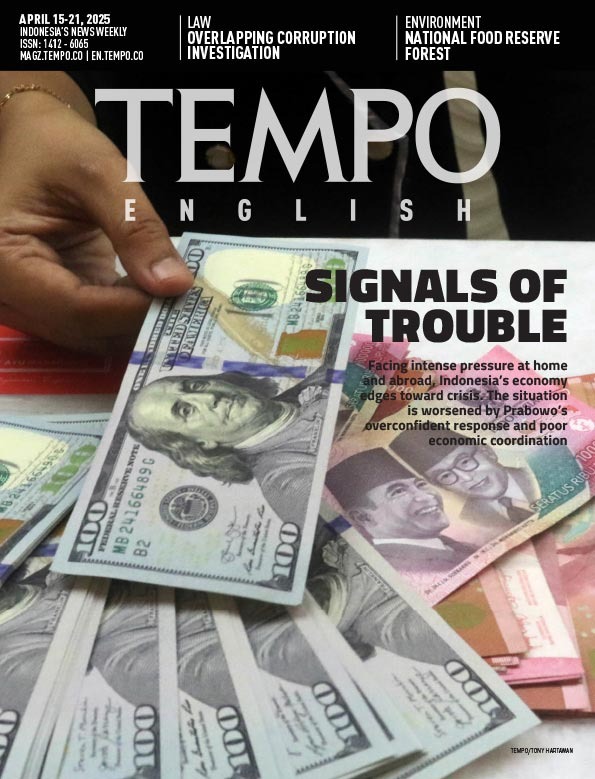Dangerous Mistakes of the Light Railway
Monday, November 20, 2023
The Jabodebek LRT has many risks as a result of design errors in the curved track sections. The government perpetuates the problem through a revision of the regulations.
arsip tempo : 174620048643.

THE move by the Transportation Ministry to conceal mistakes in the design of the Jakarta-Bogor-Depok-Bekasi light rail transit (Jabodebek LRT) project is completely unreasonable. Rather than explaining the potential dangers of the errors and improving matters, it has simply revised the regulation to accommodate these serious errors.
The Jabodebek LRT has been operating since it was officially opened by President Joko Widodo on August 28. However, after only two months of operations, plus the dynamic test period since 2021, the wheels are already worn out, and 21 coaches will have to go to the workshop to be repaired. Subsequently, suspicions arose that the damage was the result of mistakes in the design of the track because the lifetime of the trains is far less than the technical specification of 60 months, or five years.
According to Transportation Ministry Regulation No. 60/2012 on the Technical Requirements for Railroads, tracks with a gauge of 1,435 millimeters—like the Jabodebek LRT—must be widened by 20 millimeters for turns with a curve radius of less than 250 meters. This additional room is to ensure that the trains remain stable when cornering. But the fact is that a number of sections of Jabodebek LRT track with a turn radius of less than 150 meters has only been widened by 10 millimeters.
An investigation by the Transportation Ministry’s Directorate-General of Railways, along with external consultants, found that the probable reason for this was an error in the design of the curved tracks. Along the 42.1-kilometer length of the Jabodebek LRT, there are 28 trouble spots.
As a result of this widening being less than the requirement, the wheels of the railroad coaches rub against the rails, enough to produce metal filings at several locations on the railroad. These filings could cause short circuits to switches or rail junctions in this driverless train system.
This is not the first time there have been design errors in railroads produced by Adhi Karya. In 2018, an external consultant discovered that in the design of a railroad produced by the state-owned construction company there was a widening of only 5 to 10 millimeters at curves, far less than the required 20 millimeters. Adhi Karya insisted their planned railroad was safe because it was based on the International Union of Railways Regulation UIC 710 R, which specifies a widening of 10 to 20 millimeters. However, this minimum widening cannot be applied to tracks with many curves like that of the Jabodebek LRT.
Instead of asking for Adhi Karya to revise the design in line with the suggestion from the consultants, the Transportation Ministry’s Directorate-General of Railways and railroad company Kereta Api Indonesia (KAI) agreed to the proposal and allowed for discretion through Transportation Ministry Regulation No. 60/2012. After the problem appeared, the Transportation Ministry still showed no interest in making improvements to the construction of the track. Instead, they decided to revise Regulation No. 60 on the minimum widening of rail tracks, claiming that the old regulation was not in line with modern conditions.
This endeavor to cover up wrongdoing is very dangerous. The government is gambling with the safety of the public in order to save face over the Rp32.6 trillion (around US$2.1 billion) project. With six coaches, each Jabodebek LRT train can carry 740 passengers. This is the number of lives that could be lost if a train is derailed or experiences a short circuit on a journey. To make matters worse, this threat comes to passengers who are 30 meters above the ground.











